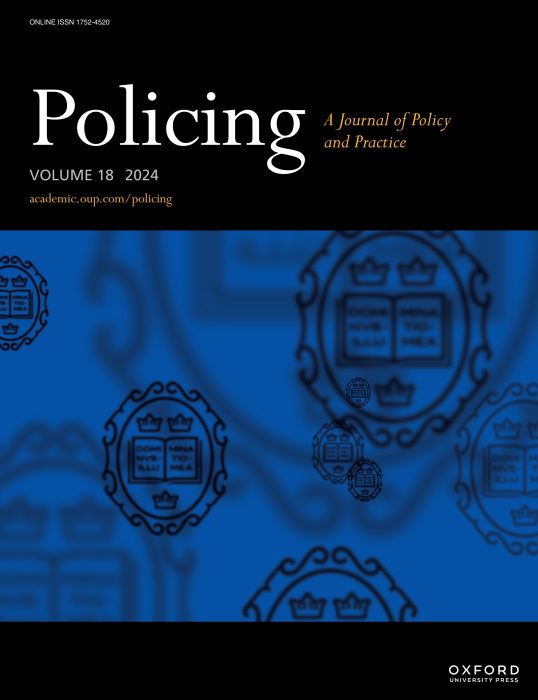Statement of relevance to a police audience
The findings of this study have important implications for law enforcement officers who are exposed to child sexual abuse material (CSAM) as part of their investigative work. The study identified several factors associated with increased sexual posttraumatic stress symptoms (PTSS) among investigators who view CSAM, including the content of CSAM, live streaming, mental health (such as posttraumatic stress disorder [PTSD], anxiety, and depression), and being a female investigator.
These results indicate that viewing CSAM is significantly associated with the sexual response of some investigators and certain aspects of the job may increase the risk of sexual PTSS. Although awareness of and discussions about mental health in law enforcement have progressed, there is still a need to address sexual health concerns related to CSAM exposure. To effectively support the well-being of investigators who have viewed CSAM, it would be beneficial for wellness programs to include targeted interventions and resources that address its potential effects on sexual response. By acknowledging and addressing this issue, law enforcement agencies can better assist their officers in navigating the complex challenges associated with investigating CSAM and promote overall mental and sexual health in the profession.
CSAM has become a serious problem in the USA and worldwide, fostered by the development of online and digital technologies (Wolak et al., 2011, 2014). According to federal statutes, CSAM is the ‘visual depiction of sexually explicit conduct involving a minor (someone under 18 years of age)’ (U.S. Department of Justice, 2020, para. 1). Since the expansion of the internet in the mid-1990s, a growing number of cases involve the possession, distribution, and production of CSAM. In the course of handling cases of CSAM, police investigators and forensic examiners may be exposed to considerable quantities of material that portray graphic rape and child sexual abuse (Wortley et al., 2014). Forensic examiners specialize in digital forensics and handle technical analysis, while investigators conduct broader criminal investigations, working together to seek justice for victims. These images can be extremely disturbing because they violate strongly held standards of ethical behaviour and depict egregious, offensive, and disturbing acts involving child victims. The content of CSAM viewed by investigators can vary substantially among cases and may include images or videos of male and female children of any age (0–17 years old) and depict anything from body images to sexual activities between an adult and a child or even the rape and torture of a child (Leclerc et al., 2022).
Sexual PTSS
According to the DSM-5 (American Psychiatric Association, 2013), PTSS consist of four clusters: intrusion (e.g. flashbacks, nightmares), avoidance (e.g. avoidance of trauma-related thoughts or feelings and reminders), alterations in cognition and mood (e.g. overly negative thoughts and assumptions about oneself or the world, negative affect), and hyperarousal symptoms (e.g. irritability and aggression, difficulty sleeping). A wealth of data shows trauma can affect multiple aspects of holistic well-being, including sexual response (Yehuda et al., 2015). Theories of embodiment explain that trauma is reflected in the body and that the memory of trauma is stored in the somatosensory system (van der Kolk, 2014; Ensink et al. 2016). Traumatic experiences that are stored and expressed in the body, including sensations, emotions, and physical responses and can also explain one’s sexual difficulties. PTSS related to sexual response are termed sexual PTSS, a concept firmly grounded in the DSM-5 criteria that refers to the manifestation of trauma symptoms (e.g. intrusiveness, avoidance, change in mood and cognition, hypervigilance, dissociation, interpersonal distress) during sexual response (Gewirtz-Meydan and Lassri, 2023). Specifically, the trauma becomes embedded in sexual behavioural patterns and expressed by unique sexual patterns tied to the trauma.
Sexual PTSS has primarily been investigated in the context of survivors of child sexual abuse survivors (Gewirtz-Meydan, 2022; Gewirtz-Meydan and Lassri, 2022; Gewirtz-Meydan and Godbout, 2023). However, given the close nature of CSAM that investigators are exposed to during their work, which includes explicit CSA content, studying sexual PTSS in this context is highly applicable. The explicit and distressing nature of the materials investigators encounter can have a significant impact on their mental and emotional well-being (Perez et al., 2010; Wortley et al., 2014; Wößner and Graf, 2016; Brady, 2017; Krieger, 2017; Seigfried-Spellar, 2018; Leclerc et al., 2022), potentially leading to symptoms similar to those experienced by CSA survivors. Therefore, it is essential to consider and address the potential implications of sexual PTSS among investigators exposed to CSAM to provide appropriate support and mitigate the psychological consequences they may face.
Current study
Previous research has examined sexual PTSS among survivors of childhood sexual abuse (GewirtzMeydan and Lassri, 2023); however, sexual PTSS has not been examined among investigators of CSAM, who are regularly exposed to difficult materials. In addition, although PTSS and sexual PTSS are both related to traumatic response, previous research found that sexual PTSS has a unique and unshared effect on mental health and well-being (Gewirtz-Meydan and Lassri, 2023). Based on these findings and the gap in the literature on how CSAM exposure effects investigators’ sexual lives, the current study examined the sexual PTSS of investigators exposed to CSAM. We examined the association between sexual PTSS and the characteristics of investigators (years in the field, agency type), sociodemographic variables, characteristics of CSAM exposure (length, content, intensity, perceived control over work), and mental health symptomology (PTSD, anxiety, and depression).

